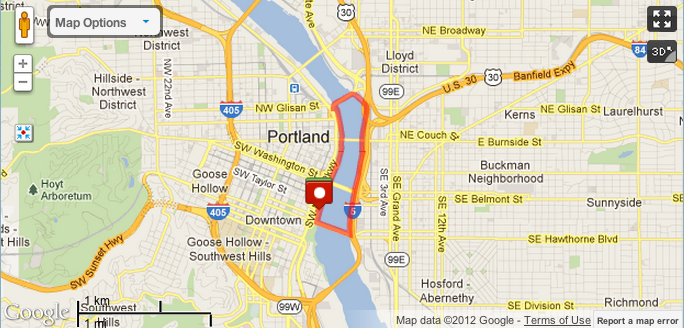The Lost Art of The Easy Run
 I attended the World Domination Summit this past weekend in Portland, OR. Despite the intimidating name, the purpose of the event is to gather and connect remarkable people. My task for the weekend, in addition to much networking, was to lead a morning run for interested attendees.
I attended the World Domination Summit this past weekend in Portland, OR. Despite the intimidating name, the purpose of the event is to gather and connect remarkable people. My task for the weekend, in addition to much networking, was to lead a morning run for interested attendees.
Of course, this fell right in the middle of a planned two-week sabbatical from all things training! But no mind, I resolved to honor my dual commitments to serve others and prioritize my self-care project through good planning.
Planning the simple 2.5-mile loop took way more time and energy than actually running. Between mapping it out, posting the meet up, connecting with attendees, confirming the event, harassing some star power to show up and then negotiating an early morning ride, there was a lot to do! And yet, it was one of my best runs in a really long time.
Running Is An Inherently Social Activity
Despite the fact that I do so much of my training on my own, I really think running is a social enterprise. Sure, I try to say HI to everyone I run past (unless I have snot all over my face or the sight of me is apparently terrifying you!), but that’s not the same.
When I think back to early Man running, I imagine packs of folks traveling together and/or doing some serious hunting. In this imagined situation it’s not about speed, unless of course some rabid hyena is on your trail. Rather, it’s about sticking together, communicating and working towards a common goal.
Action Step: Pick the pace that lets everyone in the group hold a basic conversation.
Measure Running Outcomes vs Outputs
Part of my bias towards solo running is my insane focus on my pace and the training work I am doing. I have race day goals which are broken down into performance metrics and doled out carefully across any given week. As such, I am almost always operating under some kind of running “deadline.” Effective for training for sure, but not very much fun.
One way I can see fixing this issue is making sure I have a run each week where I try to create that shared experience and connection around a passion for running. In other words, remove the numbers and let the fun factor guide me.
Action Step: Pick a new route or new people to run with, or both. Shake up your routine!
Most Runner’s Don’t Run to their Extremes
One of the huge benefits of a Marathon Nation Training Plan is the quantifiable hard work based off of your fitness test. There is no slacking; the work will make you a stronger and faster runner. This is a big shock for most runners as they tend to gravitate towards a “comfortably hard” level of effort.
The effort that feels like it’s “work,” but in reality most of this effort falls into one of two camps: First, it’s not hard enough to produce the fitness gains required for improved progress. Second, it’s not easy enough to facilitate active recovery.
By sticking with the similar intensity workout all the time, these athletes are putting themselves into a rut. Not to mention that they are totally missing out on the fun of running with others at a very comfortable pace.
Action Step: Track your time spent training in particular zones and make sure you have an equal split between time spent at high and low intensities.
If you’re interested, here’s what I did to make the run work. I post it here in the hopes that you can do the same, or perhaps offer more input or creative thoughts on how to improve.
#1 – I posted the run online, open to all.
#2 – I clarified the pace would be dictated by the slowest person in attendance.
#3 – I chose a short, scenic route that could be repeated by other runners for more miles if so desired.
#4 – I led the run by talking, not by setting a pace.
#5 – We paused at halfway for some water and a short break.
#6 – I closed the run by thanking everyone and asking them what they liked about the run.
#7 – Rinse and (hopefully) Repeat!

2 Responses to “The Lost Art of The Easy Run”